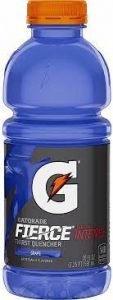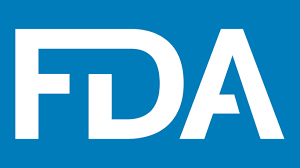Natural and Artificial Flavors
Emma Wagner
Food is something that all humans can appreciate and is fundamental to human survival. It can be analyzed from the point of view of almost any academic field. Food can be looked at from a cultural perspective, a geopolitical point of view, chemistry, biology, ecology, business, and more. Food is essential and because there is a constant need for food, it also means that the food industry is one of the biggest industries in the world.
Packaged food fills many pantries and fridges and freezers are filled with premade meals and more packaged foods. Raw foods and whole ingredients are often purchased from chain grocery stores and may have been shipped long distances. Consumers often don’t consider the industry behind the food they are eating. What is important to the consumer is that their food tastes good. But, what makes the food taste good?
One element of the food industry that is often overlooked and not understood by the everyday consumer is the flavor industry. The flavor industry is a network of a few hundred companies throughout the world that produce flavors in labs, whether it be extracting juice from fruits or creating original chemical compounds that are pleasing to human taste buds, and then selling those flavors to large scale companies that consumers are more familiar with such as PepsiCo, Nestle, and Unilever (Dwyer, 2017). The only sign of the existence of this multibillion-dollar industry that the everyday consumer is exposed to is on the ingredients label. The only sign of the existence of this multibillion-dollar industry that the everyday consumer is exposed to is on the ingredients label. Foods that the flavor industry has touched often say “added flavors,” “natural flavors,” “artificial flavors,” or something similar. The labels natural flavors and artificial flavors do not provide a responsible level of transparency to American consumers and can even be harmful.
The process of creating a flavor involves many moving parts. As an example, the process to create grape-flavored Gatorade. This process involves communication between several different companies and teams within these companies, months of trial and error and taste testing, legal considerations, and more until eventually grape Gatorade ends up in front of the consumer on a shelf at the grocery store (Wagner, 2021).
The first step to creating grape-flavored Gatorade is that PepsiCo, the company that owns the Gatorade brand, would approach a flavor company such as Symrise or Tate and Lyle about interest in the new flavor. Negotiations start and communication continues throughout the whole

process (Wagner, 2021).
The flavor company would then start to produce unique grape flavors to try to sell to PepsiCo. They would likely pull from previous projects and files to find previously created grape flavors or find the molecular compound that makes grapes taste the way they do. Then a flavorist works with these compounds to create something original, grape-flavored, and hopefully safe for consumer consumption. There are standard compounds for most of the common flavors. Eventually, this leads to taste testings and hopefully a sale (Wagner, 2021).
There are many legal parts to the process as well. The flavor has to be approved by various food safety organizations including the Food and Drug Administration (FDA) and often the Flavor Extract Manufacturers Association (FEMA). Considerations may include if other similar formulations are already approved, the quantity of the compound that is in the product, and what other chemicals are in the product, and how they interact with each other. In addition, there is the legal process behind ownership of the flavor and if it is patentable (Wagner, 2021).
If the flavor company is able to sell their grape flavor to PepsiCo, millions of dollars will be exchanged and grape-flavored Gatorade will be on the shelf. If a customer were to turn over the label to read the ingredients they would see that the first five ingredients on Gatorade’s Thirst Quencher Fierce Grape drink are water, sugar, dextrose, citric acid, and natural and artificial flavors. Natural and artificial flavors are listed but the customer does not actually gain any knowledge of what that means, the process that went behind the grape flavor, or what the grape flavor actually consists of. Throughout the flavor industry and flavor-making process, there is a lack of transparency and issues that can directly affect the customer (Wagner, 2021).
One of the biggest issues is that the customer does not know the actual ingredients that are in their foods. One of the biggest issues is that the customer does not know the actual ingredients that are in their foods. The purpose of the ingredients list on the back of foods is so that consumers are able to understand what they are putting into their bodies. This could be a concern for people who have dietary restrictions, allergies, or ethical or moral restrictions. But the only label is that there are flavors, natural or artificial.
In the United States, the FDA defines natural flavors as any component, such as an oil or extract, that comes from a natural source, such as a plant or animal, “whose significant function in food is flavoring rather than nutritional” (CFR – Code of Federal Regulations Title 21, 2021). Directly building off of the definition of natural flavors, the FDA defines artificial flavors as “any substance, the function of which is to impart flavor, which is not derived from [natural things]” (CFR – Code of Federal Regulations Title 21, 2021).
At the base of these definitions is that ingredients that are labeled as natural or artificial flavors have to be included for flavor purposes. Natural flavors have to be derived from natural substances and artificial flavors are defined as any flavor that is not natural. The FDA has further specifications based on specific products and qualities of these ingredients but in general, flavors can be made of anything or any compound as long as it has been approved.
In an interview, Jeff Wagner, a businessman who sells flavors, shared similar definitions. He said that natural flavors “are flavors that come from natural sources.” When asked about artificial flavors he took a bit longer to answer. Eventually, he described artificial flavors in a way similar to that of the FDA, he said artificial flavors were flavor compounds that do not come from natural sources. In order to explain the difference further, Wagner described a natural and artificial mint flavor. He says a “[natural mint] flavor might have 1,000 different compounds in it and artificial [mint] might have 50 of the most important” (Wagner, 2021). There are transparency issues for the consumer for both natural and artificial flavors.
For labeling something as a natural flavor, one of the issues is that not all people can eat or consume all natural things. The Food Allergen Labelling and Consumer Protection Act requires that ingredients list to highlight and list if the food or drink contains any of the most common allergens. This includes milk, eggs, fish, shellfish, tree nuts, peanuts, wheat, and soy (Center for Food Safety and Applied Nutrition, 2019). For example, if an almond extract is part of a natural flavor concoction and is not listed as its own ingredient, the bottom of the ingredients list will say that the product contains tree nuts.
Problems arise when products contain less common allergens. The organization, Kids with Food Allergies, a division of the Asthma and Allergy Foundation of America, recommends that someone suffering from food allergies should “check with the manufacturer to be sure the food is safe” (Natural Flavoring Can Contain Food Allergens, 2015). Sesame, for example, is not required to be listed on the list of allergens. So if sesame oil is listed as a natural flavor, it would be the consumer’s responsibility to contact the manufacturer themselves. Grace Williams, a student at Indiana University who is allergic to both tree nuts, a common allergen, and sesame, a less common allergen, explains her experience. She says she “always reads the ingredients” (Wagner, 2021). When asked about natural and artificial flavors she admits she doesn’t always give them a second thought but said that something like sesame flavoring could be listed as a natural flavor. Williams revealed that she has had a minor allergic reaction to a supposedly safe food before but admits it could be because of a lot of different factors and not necessarily because of a labeling problem.
Another concern for consumers in the realm of the natural flavor label is other dietary restrictions that may come from ethical, moral, or religious grounds. For example, if a consumer was a practicing Muslim who did not eat pork products, they may not be aware if any sort of pork product was used for flavoring and only listed as a natural flavor. Similar situations could happen for members of other religious groups or people who do not eat certain things such as meat or dairy for other ethical reasons. Wagner states something like this couldn’t happen. Under FDA guidelines, however, if a flavor compound is a small enough concentration, it can be listed as a natural flavor. This includes products like a pork flavor that comes naturally from a pig. The label of natural flavor is not necessarily explanatory.

Similarly, the label of artificial flavor can also lack transparency and be harmful to the consumer. According to the FDA, artificial flavors are defined by what they are not rather than what they are (CFR – Code of Federal Regulations Title 21, 2021). They are any substance added to a food or drink for the purpose of flavor that is not a natural flavor. The problem with this is that it allows for any substance to be added. The FDA does have more restrictions and flavors have to be evaluated for safety concerns, but by defining artificial flavors by what they are not, it allows for a wide interpretation.
Similar to the natural flavors label, artificial flavors have the same concerns about allergens and dietary restrictions, but they also have a larger safety concern. The FDA recalls more artificial flavors that are in packaged foods than natural flavors. Consumers are often not aware of the recalls because they don’t include recognizable ingredients and are simply labeled under the artificial flavors label.
In 2018, the FDA removed seven synthetic flavors from their approved additives list. One was because it was an additive that manufacturers no longer used and was outdated. The other six were removed due to a petition from multiple organizations including the Breast Cancer Prevention Partners, the Center for Food Safety, and the Environmental Defense Fund because “the petitioners provided data demonstrating that these additives induce cancer in laboratory animals” (Food Additive Regulations; Synthetic Flavoring Agents and Adjuvants, 2018). The FDA removed these six ingredients, not as a matter of concern for consumers, but because they legally had to due to the animal testing. The additives may have been removed from the approved list but consumers have no evidence of thisThe additives may have been removed from the approved list but consumers have no evidence of this because their food labels will continue to just say artificial flavors.
The labels natural flavors and artificial flavors adorn the ingredients list of many foods and beverages that the everyday American eats and drinks. Most people don’t give it a second thought. But behind the labels is a multibillion-dollar industry. The labels lack transparency and can be harmful to the consumer.
REFERENCES
Center for Food Safety and Applied Nutrition. (2019). Food Allergen Labeling And Consumer Protection Act of 2004 Q&A. U.S. Food and Drug Administration. https://www.fda.gov/food/food-allergensgluten-free-guidance-documents-regulatory-information/food-allergen-labeling-and-consumer-protection-act-2004-questions-and-answers
CFR – Code of Federal Regulations Title 21. (2021). Fda.gov. https://www.accessdata.fda.gov/scripts/cdrh/cfdocs/cfcfr/cfrsearch.cfm?fr=501.22
Dwyer, K. (2017, March 15). The Truth About Natural Flavors. Bon Appétit; Bon Appétit. https://www.bonappetit.com/story/truth-about-natural-artificial-flavors
Food Additive Regulations; Synthetic Flavoring Agents and Adjuvants. (2018, October 9). Federal Register. https://www.federalregister.gov/documents/2018/10/09/2018-21807/food-additive-regulations-synthetic-flavoring-agents-and-adjuvants
Natural Flavoring Can Contain Food Allergens. (2015). Kidswithfoodallergies.org. https://www.kidswithfoodallergies.org/natural-flavoring-can-contain-food-allergens.aspx
Wagner, E. Interview with Jeff Wagner. (November, 2021).
Wagner, E. Interview with Grace Williams. (November, 2021).
